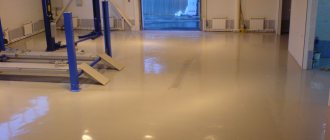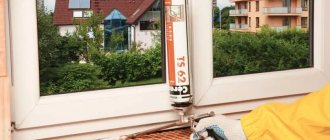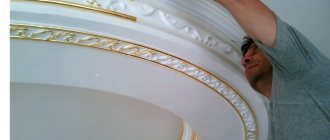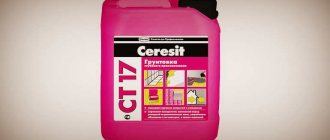Painting small parts at home can be done in several ways. Powder paint is considered one of the best materials for processing metal products, but its use requires special conditions. The most difficult of them is drying at high temperatures. It is for these purposes that a polymerization chamber is created, and if equipped with your own hands, the cost price will be much cheaper than purchased equipment.
Set of tools
In order to build this device in a garage, you should prepare the following tools:
- welding machine (preferably semi-automatic);
- Bulgarian;
- roulette;
- level;
- metal scissors;
- tools for working with electrical wiring (pliers, etc.).
A chamber for polymerization of powder paint can be made according to the described principle and without a welding machine. All connecting work can be done using rivets or self-tapping screws - it all depends on the availability of the tool and the ability to use it correctly.
Drying ovens for powder coating
The dead-end and through-flow polymerization chambers developed and manufactured at OKB Potok meet industry standards and have a number of advantages:
- heating devices (heaters) are located in the lower part of the chamber, which allows rational use of energy and even distribution of heat throughout the working area;
- special polymer fiber makes it possible to limit the thickness of the chamber walls (no more than 75 mm) to minimize external dimensions;
- It is possible to produce cameras with any useful volume size, incl. special collapsible ovens;
- adjusting the heating speed to a given temperature;
- tests show that the actual temperature gradient does not exceed 3 C;
- the period for maintaining a given temperature can be adjusted so that energy consumption corresponds to technological needs.
The devices can be equipped with a system for remote monitoring of parameters. There is a structurally designed system for controlling the heating rate of the polymerization furnace.
The technology of coating with powder paint requires the fulfillment of a number of conditions related to the quality of painting and the durability of the result. Depending on what materials will pass through the drying oven, it is necessary to precisely maintain the temperature regime. Our products allow us to comply with all the requirements of powder coating technology in production of any scale.
Materials for work
To make a simple powder paint polymerization chamber, you need to stock up on the following materials:
- profile pipe (edge size from 25 to 35 millimeters);
- sheet metal (preferably galvanized);
- hinges and latch for camera doors;
- insulation (basalt slabs with a layer thickness of 100 millimeters are recommended);
- heating elements;
- cochlear type fan;
- temperature and electrical appliances control unit;
- cable with a cross-section corresponding to the load in the circuit.
The amount of materials should be calculated in advance according to the drawing made; for example, for painting small parts such as car wheels, a cabinet measuring 1000×1000×2000 mm will be sufficient. The polymerization chamber can be made more voluminous, but it should be remembered that it will not be so easy to heat it to the required temperature.
Main functions of the polymerization chamber
The main purpose of the polymerization chamber is to heat the space inside it to a certain (very high) temperature and maintain it for a long time. This allows the powder paint composition to evenly melt and spread over the entire paint surface. This improves the coloring of the product and ensures smooth and uniform spreading of the layer. Due to such processes, the chemical composition of the paint is completely polymerized, which contributes to a high level of bonding between the paint and the surface of the product.
Each polymerization chamber model has its own range of temperatures that it is capable of recreating and maintaining. It is worth familiarizing yourself with it at the stage of choosing a specific model. The functionality of the device largely depends on this range.
Polymerization chambers have become invaluable assistants in those areas where various products are actively painted with powder compositions. It copes with its functions perfectly and increases the quality of such coloring many times over. Its functionality will be relevant for those areas where it is necessary to heat other substances to high temperatures and maintain them in this state for a certain time.
Frame making
Manufacturing begins with the assembly of the frame, for which, according to the drawing made, a profile pipe is cut to size. The frame is assembled either using a welding machine or bolted together. The walls and doors of the cabinet must be made so that they have a cavity inside. This void will eventually be filled with insulation.
The manufactured frame can be painted with heat-resistant paint, having previously treated the metal to remove rust and other traces of corrosion. Since the camera is being made for home use, this step can be skipped, especially since the frame will be hidden under the covering sheets.
Single-core constant power cable NSKT
In modern conditions for heating the soil of the freezer
use armored heating cables of constant power NSKT. For convenience, it comes in two forms:
• Reliable sections, coupled with installation wires and ready for installation according to the project. • In measured form on drums, which provide the opportunity to independently produce sections when performing work directly on site. This option somewhat simplifies the process of installing a floor heating system in freezers.
The heating section in the ground heating system of refrigeration chambers is a single-core cable with installation wires and couplings installed on both sides. Using couplings, mechanical and electrical connections are made between the wires and the heating cable.
Technical characteristics of NSKT
• Linear power 30 W/m. • Power supply – 220-240 V. • Temperature range for installation – from -30 to +90 °C. • Operating temperature on the shell – up to 90 °C. • Continuous polyethylene insulation. • Large selection of section lengths – from 7.0 to 199 m. • Cross-sectional diameter – 6.0-7.0 mm. • The minimum permissible radius of a single bend is 35 mm. • Degree of protection – IP67. • Degree of flammability – does not contribute to the spread of flame. • Service life – 25 years. • Warranty – 5 years for heating outdoor areas.
Wall and door finishing
Next, you should sew up the inside of the cabinet walls - for this, sheet metal is used, which is pre-cut in accordance with the dimensions of the chamber. Sheathing material can be fastened using a welding machine or self-tapping screws. In the second case, you should ensure that the sheets fit tightly to the profile pipe and there are no large gaps.
Then the wall cavity is filled with insulation. If basalt slabs are used, they are carefully cut and secured to the inner lining. The insulation should be laid as tightly as possible, without leaving empty spaces.
After the basalt has been laid, the outer part of the walls of the future polymerization chamber can be sewn up. This is done in the same way as on the inside. After this, you can attach the hinges for the doors to the cabinet, and also install a latch or other device to lock them tightly. Brackets are attached to the ceiling of the chamber for hanging painted parts. They can be made from corners or from the same profile that was used to assemble the frame.
Operating modes
A fair question may arise: what are the considerations for choosing the illumination power and time? This depends solely on the recommendations of the manufacturer of the photopolymers you are printing with. For example, XYZPrinting themselves, for polymers of their own production, recommend setting the power to 3 and the time to 10 minutes.
Formlabs for Clear, Black, Grey, White, Flexible polymers recommend 60 minutes of exposure at a power of 405 nm, for Castable and Durable 120 minutes, for Tough 30 minutes, respectively, this is the third mode in the Power section, but for High Temp you need 60 minutes of exposure with the radiation wavelength is 365 nm, in this case you need to set the Power mode to number 1.
We tested the camera for a week, and it proved to be an easy-to-use tool. The advantages over DIY solutions are obvious - this is a final product with a nice design, a turntable and a spacious chamber. The device is compact, allowing the processing of polymers with different requirements for the length of UV radiation. The device will become an indispensable assistant both for companies that print using SLA and DLP technologies on stream, and for ordinary users who want a simple and universal solution for illuminating polymer models. The cost of the device is 29,900 rubles.
Placement of heating elements
Heating elements are installed on the side walls. All selected devices are evenly distributed on two sides of the chamber from the top to the floor. After this, all elements are connected to each other by wires according to a pre-drawn electrical diagram. If the garage has a three-phase power cable, then it is advisable to assemble the heating elements based on this.
Next, the common power cables of the heating elements are routed out through the walls. When everything is ready, you can cover the heating elements with protective covers, which are made of the same sheet metal as the walls. The casings are made so that there are technological openings at the top and bottom for passing air, which will be pumped by a fan.
XYZPrinting polymerization chamber
The polymerizer has a pleasant design and is made in the corporate colors of the professional line of XYZ equipment - black and red. Supplied in a small box with a dense foam frame. The kit is minimalistic - device, instructions and power cable with unit.
The chamber's internal space is 180mm in diameter and 200mm in height, which is larger than the chamber sizes of many SLA and DLP printers, respectively - all printed models will fit in one go, even with supports.
Fan installation
The snail-type fan is assembled into a structure with two air shafts. In this case, the intake part should be approximately one and a half times larger in cross-section than the discharge part. The fan itself is attached to the cabinet in such a way that its winding and wires are outside the polymerization chamber.
Air shafts are installed inside so that the forced air passes through the protective casings of the heating elements, exits from below, and again rises upward through the parts suspended for drying. This will ensure optimal temperature distribution throughout the chamber and uniform polymerization of the entire applied paint layer.
What is a polymerization chamber and how does it work?
An even, strong and durable coating with powder painting is achieved not only due to the quality of the materials used. It also acquires such properties when using a special design called a polymerization chamber. This device allows you to complete the polymerization process of chemical compounds present in powder paint in a short time. In essence, such a chamber is an oven for a product on which a powder-type coloring substance has been applied. The technical features of the device allow it to reach internal temperatures of up to +210 °C. Under normal conditions, such an effect cannot be achieved, and the temperature gained in the room will spread over the entire area of the room. Here, in a minimal volume of space, the air quickly warms up to the required temperature, which accelerates the polymerization processes of substances in the paint.
Calculation of the required cable length
To prevent ground freezing, the floor heating system for freezer chambers
must maintain a temperature between +3 and +5 °C. Taking this into account, the required heating power and cable length are calculated. They must fully compensate for heat losses through the floor covering.
To determine the power of the system and the length of the cable, you will need the air temperature in the room, the thickness and thermal conductivity of all layers of the floor structure, including insulation.
The first step is to determine the total heat flow: N = S • ΔT/R (W),
where S is the heating area, sq.m., ΔT is the temperature difference between the temperature in the chamber and the required ground temperature, °C, R is the thermal resistance chamber floor and insulation, sq.m. • °C/W.
Total thermal resistance is calculated using the formula:
R = 1/α + δb/λb + δiz/λis,
where α is the heat transfer coefficient from the air in the chamber to the concrete floor, 8.7 W/sq.m. • °C; δb – concrete thickness above the insulation layer, m; λb – thermal conductivity coefficient of reinforced concrete, W/sq.m. • °C; δiz – insulation thickness, m; λiz – thermal conductivity coefficient of insulation, W/sq.m • °C.
After calculation, the heat flow value is increased by 10-20% to ensure a margin.
The power of the floor heating system in freezers Qsp is, as a rule, 15-20 W/sq.m. As an example, we can take a refrigeration room for freezing dumplings and semi-finished products with an area of S = 100 sq.m. with an internal temperature of -30 °C. Then the section power should be equal to: P = S • Qsp = 100 • 15 = 1500 W.
If we take MNT sections from a two-core cable with their linear power Pl = 30 W/m, then for the above example the following wire length L will be required:
L = P/Pl = 1500/30 = 50 m.
In the case of using NSKT sections with a linear power of 30 W/m will require the same length of heating cable.











